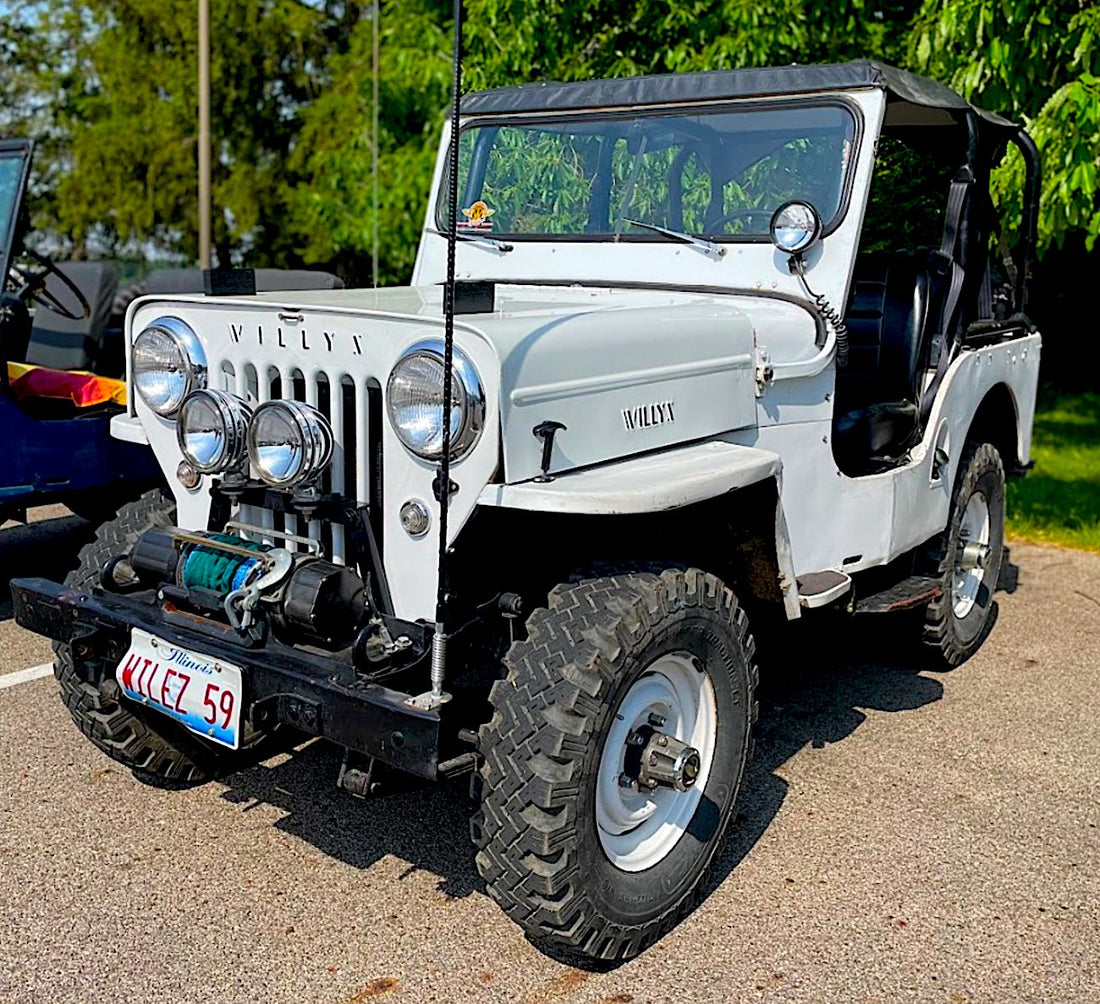Unveiling the Power Within: A Tech Specs Guide to the CJ-3B's Engine, Fuel, and Exhaust Systems
Click on any link below to shop now for Willys CJ-3B Jeep parts:
Embark on a journey into the mechanical heart of the Willys CJ-3B as we unravel the essential specifications that power its legendary performance. From the robust 4-134 "Hurricane" F-Head Motor at its core to the intricacies of the Carter YF single-barrel carburetor orchestrating fuel delivery, we navigate through the engine's inner workings. Witness the marriage of power and efficiency as we explore the exhaust system, understanding how each component contributes to the unique symphony that is the CJ-3B. Whether you're a seasoned enthusiast or a newcomer to the world of vintage Jeeps, this guide promises valuable insights into the engineering brilliance that defines this classic off-road icon.
4-134 “Hurricane” F-Head Motor (All Years)
- Engine Type: Inline 4 cylinder, F-Head
- Displacement: 134.2 cubic inches (2.2 liters)
- Bore x Stroke: 3.125 inches x 4.375 inches (79.4 mm x 111.1 mm)
- Compression Ratio: 6.9:1
- Fuel Delivery: Carter YF single-barrel carburetor
- Cooling System: Water-cooled with a radiator and fan
- Fan: Belt-driven fan located in front of the radiator
- Ignition System: Distributor-type ignition
- Valvetrain: L-head (Overhead Valve)
- Cylinder Arrangement: Inline-4
- Firing Order: 1-3-4-2
- Maximum Horsepower: Approximately 72 horsepower (54 kW)
- Maximum Torque: Approximately 114 lb-ft (154 Nm)
- Cylinders: 4 Cylinders
- Idle Adjustment: Typically located on the carburetor and allows you to control the idle speed of the engine. This essential adjustment ensures proper engine functioning at idle.
- Throttle Linkage: Mechanical linkage connecting the accelerator pedal to the carburetor throttle plate, controlling air and fuel intake for optimal power output.
- Fuel Metering: Achieved through the carburetor's internal mechanisms, regulating fuel flow based on throttle position and engine demand.
- Air/Fuel Mixing: Primarily achieved within the carburetor, ensuring the correct combination of air and fuel before entering the engine's cylinders for combustion.
Carburetor: Carter YF Single Barrel
- Fuel Delivery: Single Barrel
- Choke: Manual, located on the carburetor, controls the air-fuel mixture during cold starts.
- Main Jet Location: Inside the carburetor body, regulates fuel flow during normal engine operation.
- Idle Jet Location: Within the carburetor body, controls fuel flow at low engine speeds for smooth idling and low-speed performance.
- Venturi Arrangement: Consists of two venturis creating a pressure drop to draw fuel into the airstream for proper mixing.
- Material: Cast Iron
- ID Tag Location: Typically on the top of the carburetor body, near the throttle linkage.
- Fuel Pump Type: Mechanical single diaphragm-type fuel pump
- Operation Method: Mechanical motion synchronized with the engine's rotation, drawing fuel from the gas tank and delivering it to the carburetor.
- Flow Rate: Typically ranges from about 30 to 60 gallons per hour (GPH) or roughly 113 to 227 liters per hour (LPH).
- Fuel Delivery: Positive Displacement (mechanical diaphragm-type fuel pump)
- Mounting Location: Typically on the side of the engine block, near the front, ensuring efficient fuel delivery to the carburetor.
- Check Valve: Integrated into the fuel pump assembly to maintain consistent fuel pressure and prevent backflow.
- ID Tag Location: Typically on the side or top of the pump body.
Exhaust System Specifications:
- Material: Cast Iron
- Configuration: Integrated into the cylinder head
- Purpose: Collects exhaust gases from each cylinder and directs them into the exhaust pipe.
- Material: Steel
- Routing: Extends from the exhaust manifold, guiding the collected gases toward the muffler.
- Diameter: Standard diameter ranges from 1.5 to 2 inches.
- Type: Single-chamber design
- Material: Aluminized or stainless steel for durability and corrosion resistance
- Purpose: Reduces exhaust noise and minimizes backpressure, optimizing engine performance.
- Material: Steel
- Routing: Connects to the outlet of the muffler, expelling treated exhaust gases away from the vehicle.
- Exit Location: Typically extends to the rear of the vehicle.

